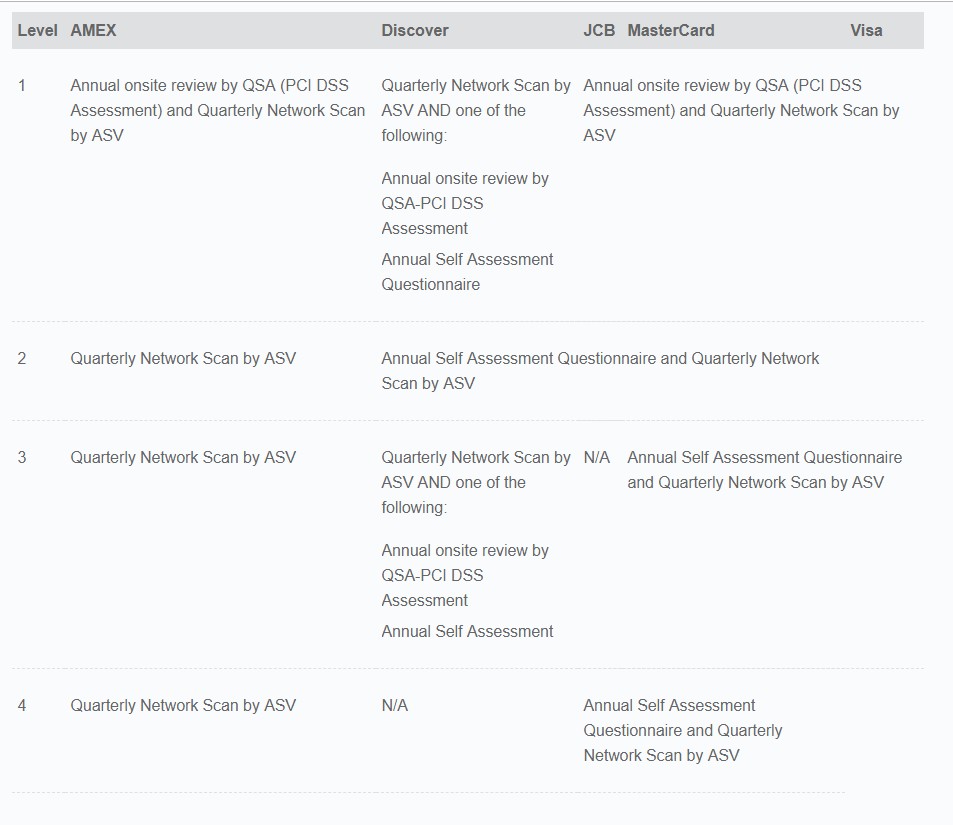
I’ll admit it.
Like any other companies, or culture within the company, we have our own little sayings to describe certain situations, certain issues or certain people. There is the often used phrase of FOMO – Fear of Missing Out, a situation where a person is so afraid to be losing out on things that they need to be involved with everything. There is the usual phrase of NRS – New Recruit Syndrome, where a newcomer becomes so enamored with making things ‘happen’ in the company that suddenly everything seems to be moving — until it stops again. There is also the term LLB, not to be confused with the Bachelor of Law – “Look Like Busy”. It’s basically to describe someone who always seem to be rushing, to be going someplace, to be doing something, to be typing things in their handphone, to be always sitting down as if their ass is on fire, to be talking on the phone with their bluetooth headset while walking around, making them look like they are doing a soliloquy in Shakespeare’s Hamlet.
With the advent of the mobile phone, the ultimate personal and intimate device, this LLB has taken into another dimension. Admittedly, as consultants, we do fall into the trap of being busy many times over. There are often remarks made to me: “You seem to be busy all the time.” The truth is, yes, sometimes I am rushing from one meeting to the next. Sometimes, I need to just get into my car, and in between meetings, I am on the phone to finish off another meeting. Yes, sometimes, we overbook ourselves because client A doesn’t come back to me and I booked in Client B and then Client A says OK, let’s do a meeting and I go, Ah Crap, can we move yours an hour later. Client A goes, “Wah So busy one ah?” and Client B, when I am rushing to finish off the meeting so I can go to Client A, goes “Wah So busy one ah?”. I think 80% of this LLB occurs because my daily schedule sometimes end up so dynamic, as in, random clients may need to meet for whatever reason – and to top it off, we don’t have dedicated sales, so many times we are doing marketing, meeting, administration, auditing, operational support etc.
But LLB isn’t about actually being busy – it’s about looking or being busy even when we are not. And that’s the truth. We are sometimes accustomed with being so caught up with things, we just think it’s unnatural to actually have….time.
Think about it. How often do we actually sit down over lunch/dinner and not whip our phone out, even when we are not working on anything? Or at the traffic lights or caught in a jam? Or when we are having coffee alone? Or when we are waiting for the one guy who is always late for meeting and we all sit around tapping away our phone. Truth: I’ve actually seen a client who, while waiting for the meeting to start, take up his phone and just started tracing his finger over his phone in circles while staring at it. He wasn’t reading anything. He didn’t have any app started. He wasn’t listening to Spotify. He was, in a trancelike way, just tracing his finder in tiny circles over his LOCKED screen.
What?
How dependent have we become to this tiny little device we always have in our pocket? How often do we go absolutely ape*hit when we cannot find our phone? How often do we actually place this guy on the table in our meetings, in our lunches, in our time even with our family? Have we become so consumed with the idea that WE ARE NEEDED that we think we are needed even when WE ARE NOT?
Once, during an interview, a guy I was talking to kept checking his phone. Maybe he was nervous, OK, I’ll hand him that. But he kept looking at his phone until I finally asked: “Is your boss looking for you?” and he looked at me in a confused manner and I just shook his hands, said, “Thank you for your time to sit down with me” and I left. Oh, yeah, I was the one interviewing and he was the interviewee.
What is wrong with us? Are we so disillusioned with our own importance that we can’t even for a single minute stop this nonsense of tapping on the phone, writing an email, drafting a report, reviewing a document or composing a stupid blog post and just look up and find that we are still human?
One of the things we need to change, starting from our own, in this LLB business:
a) Meetings – if you are meeting a client, or meeting a service provider, or meeting a colleague, make it a point to limit the phone usage. It’s highly insulting that during a one on one meeting, while it’s going on, that you whip our your phone and tap an email or a reply to a chat. If you have to do so, such as answer a call, excuse yourself and say, “I am so sorry. I need to take this just for a while” and then tell the other side that you would call them back. Don’t take any longer than necessary. Of course, there are exceptions. Once I was with an important client and my mother called. She never calls during work hours unless it was an emergency, so these were exceptional circumstances. I took it, but I apologised first to the client. The concept is simple: if someone actually takes time to spend time with you, give them the due courtesy of your own time with them. Except for these exceptional circumstances, let’s have conversations and connections, as opposed to emailing or texting.
Another irritating habit (of which sometimes I am also culpable) is the constant tapping of the laptop during a meeting. This is usually done by non-leads (the guy in the meeting that is not participating much in terms of discussion). Unless they are doing minutes or capturing the discussion, this is strictly banned in our company. I had a client once who told off his executive to get out when he was tapping furiously on the keyboard while the meeting was going on, and it wasn’t related at all to the discussion. He was thinking to solve an operational issue or sending out an email to another client. No, his boss was saying. You aren’t that important. Get that in your head and sit down and shut the hell up and listen and learn. Good lesson, that one.
b) Mealtimes– Even lunch or dinner with colleagues, It’s very irritating to have the phone out the whole time. Don’t. Everytime you do that, it states that the people around you are unimportant. In our family, we try never to do have that. Yes. Even when I am bored stiff staring while my 3 year old is taking his own sweet time eating his food (he likes to eat on his own but by the time he finishes, fishes have actually evolved into birds) – and my wife and my other kid are no where to be found in the shopping mall, I have to refrain from whipping out my phone, unless it’s a call. Mealtimes are no-no for phones for us in our family. Why not during our corporate lunches/mealtimes as well? Why not interact without the laptop?
c) Travelling– Yes, I admit, caught in horrendous traffic, it is very enticing to catch up on things. I’ve avoided this (because of traffic summonses) primarily by either having a meeting in the car (yes, I am theoretically still using the phone) or just listening to Spotify, which is a God Sent to road warriors who spend half their day stuck in traffic. If I am with another colleague in the car, then getting on the phone is a no-no (also because some meetings are obviously confidential). Let’s interact instead! In the lift, don’t whip out your phone and tap around or continue talking. In the toilet, for God’s gracious sakes, don’t talk on the phone while you take a dump! I’ve heard this many times before. There are practical reasons not to do these things – primarily because of confidential information being accidentally leaked out – but also – come on, it’s crazy having to chit chat while doing something in the toilet.
Tell ourselves: I am not that important. Yes. This goes against all the motivation, self improvement philosophies that keep saying to us how important we are etc. No. We are not that important. Life for other people will still continue on if I don’t respond in an hour or so. While it is common courtesy to respond to a text or email within a reasonable time, nobody is saying you need to respond immediately. I mean, back in our father’s time, they didn’t have email. How on earth are they supposed to reply “yes” to lunch immediately? So unless it’s life and death and remarkably exceptional circumstances, sometimes it’s ok to put the phone down.
But take note. Many times, busy-ness occurs to us because we are poor time managers. When we promise a deadline and we miss it, and we complain because now our boss is calling us, and we go: well, family time more important, let me tell him to screw off. That’s also stupid, and will probably cost you your job. If you don’t do something or did not hand in something, then take ownership of it and do it. And doing something doesn’t mean just finishing it. It means finishing it with the proper quality required. I’ve seen many so-called reports on my table that could have been better written by llamas. As in the animal in Tibet. If you can’t get your work done, then be prepared to work over time, over weekend to fix or finish it and don’t complain about it. Deadlines are deadlines. It has nothing to do with looking like busy – it’s our own fault for not being good time and quality managers.
LLB isn’t about that. It’s about Looking Like Busy even when we are not. It’s about: Oh, let me stay up late tonight just to show everyone I am working late and send out an email at 4 am to impress my boss. It doesn’t matter what time you work until – some people like me work best between midnight at 4 am, so that’s when we get stuff done. It doesn’t mean that I send an email out at 5 am, I immediately get my morning off!
We should take our time to look around us. Observe. Even in our workplace – it’s almost like a family since that’s where we spend most of our daily hours. We can observe nuances of a person, how someone reacts, the way he or she speaks – human connection is being lost in the new generation of logical and virtual connectivity. Crack a joke. Laugh. Remind ourselves of the humanity of life.
I am often reminded of how precious little time we have on earth when I am with my children. I am reminded of a time not very long ago when I was their age, looking up at my dad as he waited for me to finish my damn meal, but (because there were no mobile phones back then I guess), still grinning at me as I attempted the foolish task of manipulating noodles into my mouth with a spoon. And suddenly I am here. Same situation, looking at a mini version of me doing the same thing and taking so much of my precious LLB time.
Are we really, truly that busy, or are we just needing to vindicate our importance on this planet before our clock is up? Our importance isn’t in the glowing screen of emails or Whatsapp messages or Facebook Likes. Our importance is in the reflection of ourselves in the eyes of our children. Our parents. Our spouses. Our friends. Or in many cases, even our pets. It doesn’t matter “who”, as long as it’s not a “what” that’s reflecting back at us.
So, enough of writing this blog post for now. I am not busy now and I don’t want to appear to be busy. There will be times when I am, for sure, so I’ll enjoy the times I am not. It’s time to get some coffee and converse with someone – or just look at my kid and wait for fishes to evolve to birds. Say no to LLB this year! Happy new year!




